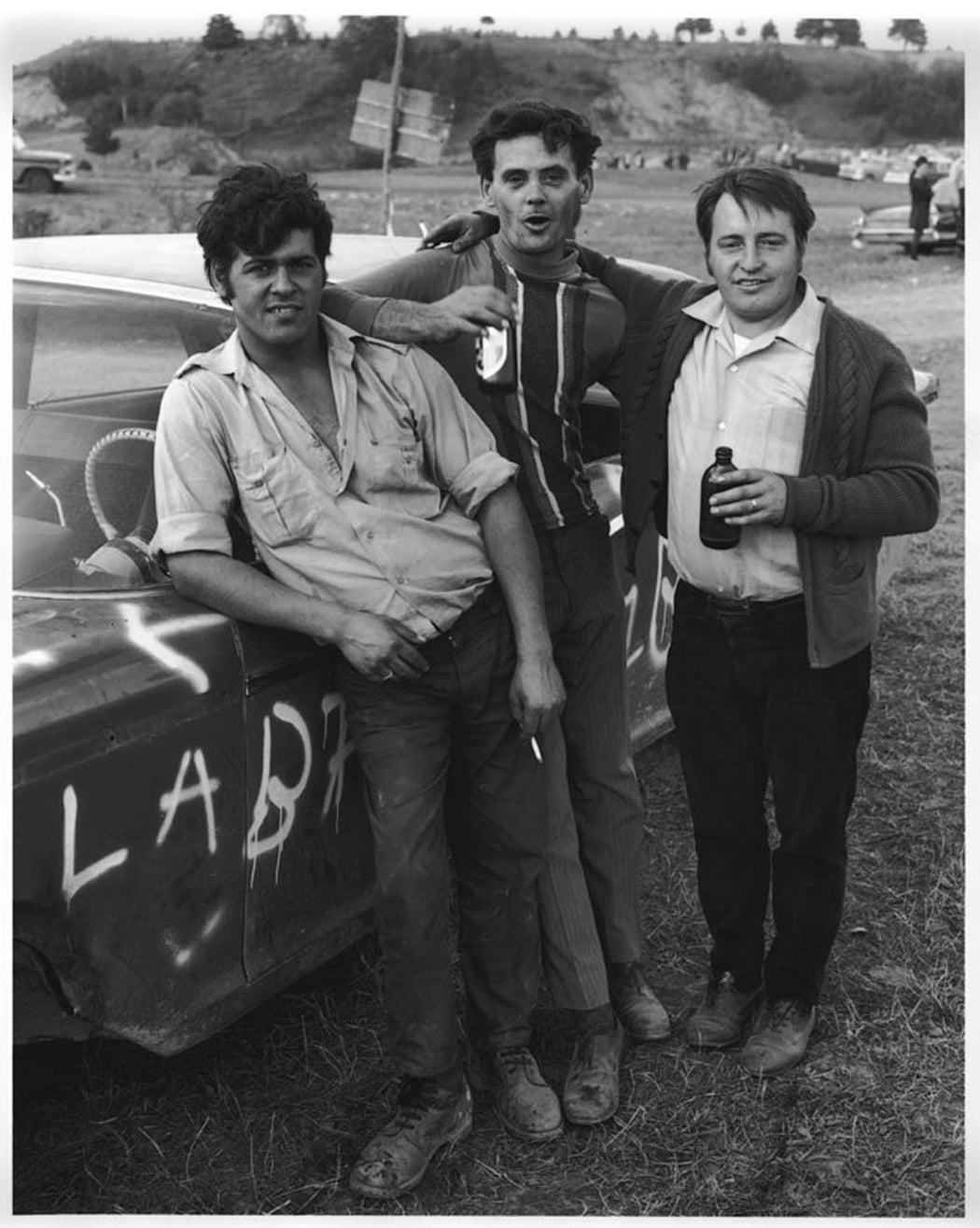
Gabor Szilasi
Luc Siamard, Édouard Guay, and Joseph Lajoie standing beside stock car, Saint-Urbain, Charlevoix by Gabor Szilasi
 Toronto, ON)
Toronto, ON)
Learn about our Shipping & Returns policy.
Have a question? Read our FAQ.
- Artwork Info
- About the Artist
-
September-October 1970
Gelatin silver print
Signed, au verso
Printed in 1971-1972
Unframed -
Gabor Szilasi became interested in photography after he was forced to interrupt his medical studies in Hungary, having been blacklisted after attempting to flee the country to escape the incoming communist regime in 1949. From November 15-25 1956, Szilasi used his camera to document the Hungarian Revolution. Escaping from Hungary in 1957, Szilasi arrived in Halifax and later settled in Montréal in 1959. Employed by the Office du film du Québec, Szilasi worked on photography assignments in Montreal as well as in rural regions of Québec to document the province, particularly the rural regions.
In 1970, Szilasi began taking a series of photographs, in particular, Charlevoix, Beauce, Abitibi and Lac St-Jean (Québec), the photographs of Charlevoix winning him national acclaim. "Szilasi's Québec is an intimate study, validated by his own visible love of the province and his subjects' open hospitality" (National Film Board of Canada, 1980). This kind of work, photographs of people, facades, interiors, and signs in the country and city, resulted in exhibitions such as “La Beauce”(1974) and “Panoramas de Montréal” (1982). Geoffrey James wrote: "His images of Beauce County are part of a larger and continuing documentation of rural life in Québec--a document that includes landscapes, architecture, portraits and an accumulation of those significant details that help to sum up a manner of living. In his craftsmanlike and self-effacing way, Szilasi is pointing out truths that most people recognize only too late . . ." (1974). Szilasi has said, "Traces of man interest me very much, whether it’s architecture or interiors or just a street or sign. There has to be a connection between nature and man in my photographs" (1980). Considered an exponent of "down to earth humane realism," Szilasi rarely photographs "official" buildings, choosing instead to capture the vernacular and non-monumental architecture of Québec.
In 1980 Szilasi would make his first trip back to Hungary since his emigration. This trip marked the beginning of numerous visits where he would photograph family friends and various architectural sites. The 1999 exhibition, “Return to Budapest”, was composed of such images. In an interview with the artist, Barbara Steinman suggested that Szilasi's decision to photograph architectural buildings had to do with their durability and permanence: "You had to flee Hungary," she pointed out, "a sense of shifting ground and the transience of reality could have permeated your work. Yet, when I look at your photographs taken over the years, it's as though you sought out and recorded a kind of stability. The fixed frontal views of buildings and frozen moments of the interiors seem to confer permanence on those places." Szilasi replied, "I believe that things have to be documented in the present, because everything is changing and in eternal flux. With most of the sites in the Ste-Catherine Street series or people aging or cityscapes changing--they have to be photographed now" (1997).
In 1997, Szilasi commenced a series of Polaroid portraits, which marked the beginning of a more collaborative process, wherein subjects were encouraged to tell Szilasi their opinions about the initial photograph. Szilasi would then proceed to take more pictures of the subject, often incorporating his subject's suggestions. Also, in 1997, the Musée des Beaux-arts de Montréal held a retrospective of his work entitled “Gabor Szilasi: Photographs 1954-1996”.
Szilasi's latest project is a photographic series on the Saint-Michel neighbourhood of Montréal, which explores this community's unique mixture of South American, Italian, Haitian, and Québecois cultures. From 1979 to 1995, Szilasi was a photography teacher at Concordia University in Montréal.


